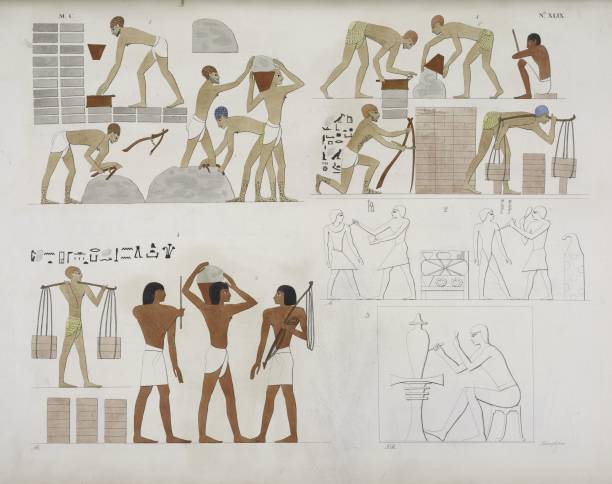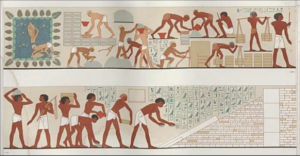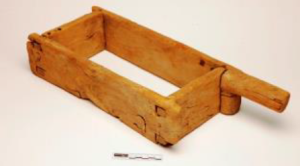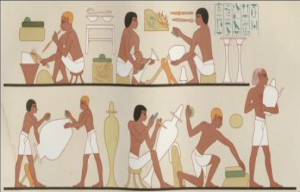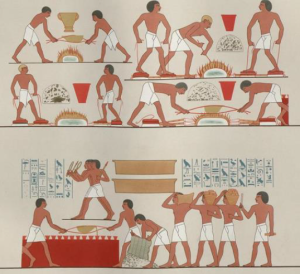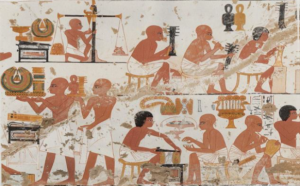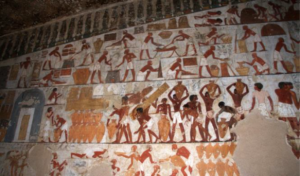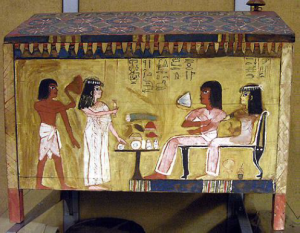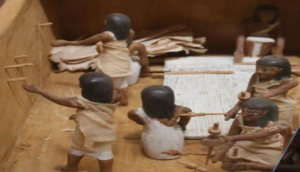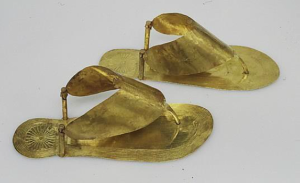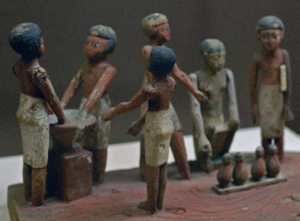Industry in Ancient Egypt
It depended primarily on agricultural products. From agricultural materials, they produced wine. The Egyptians knew many types of wine, such as barley from which beer was made, and the finest wines were made from grapes. From papyrus, they made paper, sandals, and some small boats. And from linen, they made textiles. They also produced the finest types of perfume from plants, especially lotus, jasmine, and orange blossom, each of which was used to make the best types of perfumes found in Egypt even today. From wood, they made ships and eating utensils. They also made wooden coffins from it. Due to the scarcity of wood in Egypt, they used oak and sycamore trees, which were the most widespread in Egypt. They also knew the manufacture of glass, and there are many glass tools, especially crystal and crystal. The first industry known to the ancient Egyptians was the manufacture of pottery, which they made by hand. As for stones, they are considered the most used material in industry in ancient Egypt. Then this industry developed, and it became different shapes in which food was stored and vessels were drunk from. Then they began to refine the stone and deal with it with chisels to polish it, especially since it was used to make the temples of the gods and the huge tombs of the kings, such as the pyramids. Stone was also used in the manufacture of statues and obelisks, and they knew many types of stone, such as limestone in Tura and sandstone in Gebel el-Silsila near the city of Edfu. They also dealt with the hardest types of stone, such as granite from Aswan, and very hard stones such as diorite and schist. The manufacture of ceramics and faience were well know in Egypt and have been used in the manufacture of statues, amulets, and jewelry. The ancient Egyptians were one of the peoples who dealt with the finest types of metals, such as the precious metal gold, which they brought from the land of Nubia, as they knew gold mines and extracted it from them, whether in the Red Sea or in Aswan. They also mixed gold with silver, resulting in electrum, which they covered the tops of obelisks with to give them a bright luster. From the intelligence of the ancient Egyptians was that they used dwarfs in the manufacture of gold, because of the smallness of their fingers, so they were skilled in producing gold ornaments. Silver was a very rare metal at that time, and therefore it was more expensive than gold, even though the Egyptians used it in making earrings, necklaces, and the finest types of jewelry from it
The workers:
The workers in ancient Egypt had many privileges, especially those who participated in building tombs or temples or state projects such as bridges. The state, throughout its history, established residential cities for the workers who built the tombs, such as the pyramids or the tombs of the Valley of the Kings in Luxor, where they lived, received a salary, and had health care. One of the most famous of these cities is what was known as Deir el-Medina in Luxor, which proves to us the accuracy and skill of these workers who were carefully selected to build tombs surrounded by secrecy. Therefore, there was a supervisor for each group of craftsmen, such as builders and artists who decorated the tomb inscriptions and carpenters. These workers had medical supervisors who treated them, especially those specializing in bones. As for salaries, they were in the form of shares of wheat, meat, barley, and hot meals, as well as clothing for them, their children, and their wives. Some of them were allowed to build tombs similar to those of the nobles, the most famous of which is the tomb of Sennedjem in Deir el-Medina
A scene of construction workers in ancient Egypt.
A tool used for making brick molds.
A drawing of sculptors from the tomb of Rekhmire in Luxor.
Workers smelting and preparing metals.
Gold making in ancient Egypt.
A scene of pottery making.
Cooks and food preparation
Glass making
A wooden box from the Egyptian Museum in Turin.
A model of spinning and weaving in the Egyptian Museum.
A shoe from the tomb of Tutankhamun.
A scene of winemaking from grapes
A model of beer making on display at the California Museum

